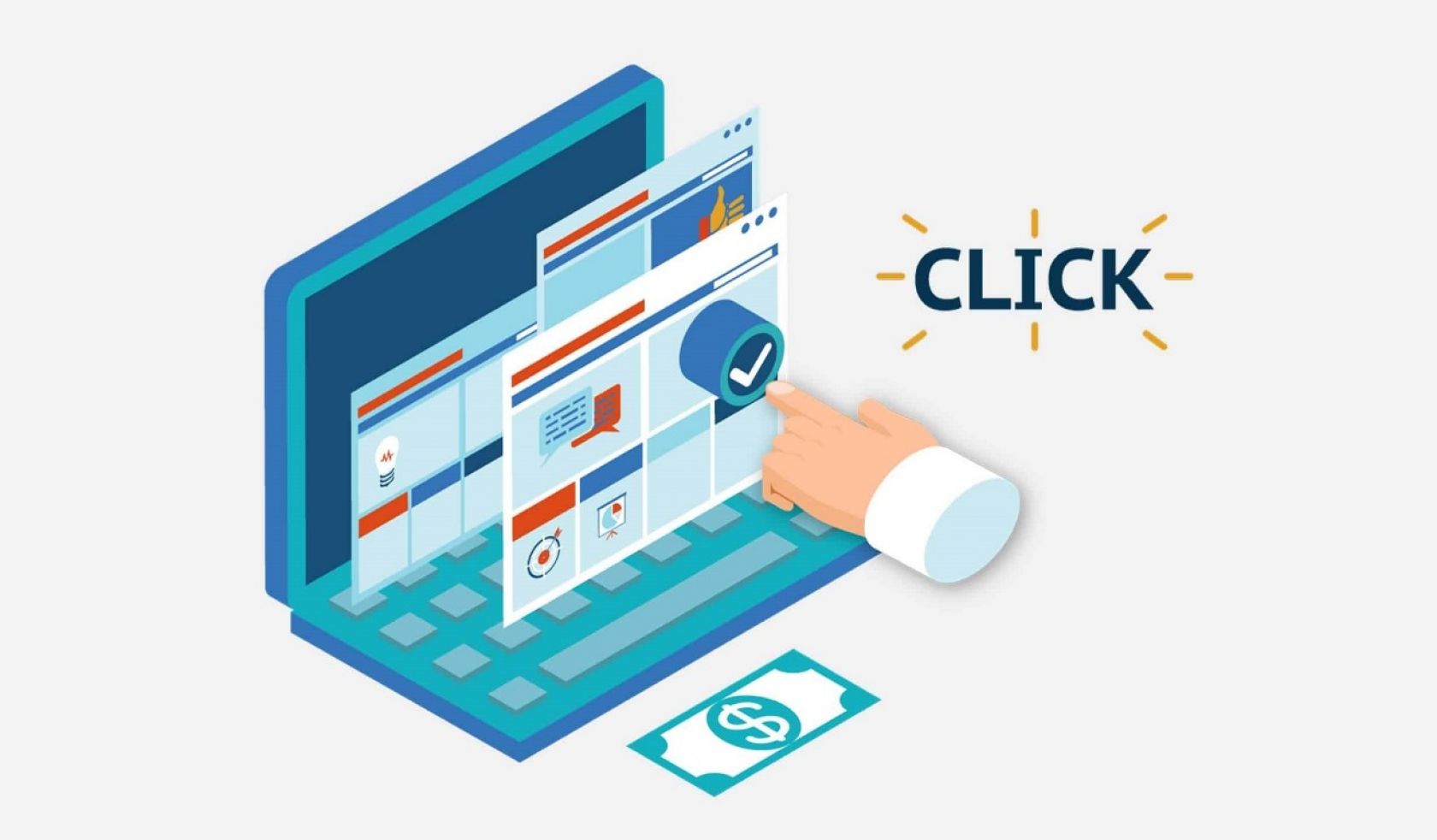Teaser advertising is considered to be one of the most effective and popular types of online advertising, which remains relevant in 2024. The term “teaser” has long been a household word in the world of online marketing, but for many, it still remains unknown.
In this article, we will take a closer look at what teaser ads are, how they work, and how to use them in 2024 to achieve maximum efficiency. In particular, we will look at the basic concepts, tools, and examples of teaser ads.
What is teaser advertising?
Teaser ads are a form of online advertising used to attract users’ attention and create interest in a particular product, service, or information. Teasers usually look like headlines, images, or short videos posted on websites, social media, and other online platforms.
The main characteristics of teaser ads:
- Interest. Teasers are designed to interest the audience and make them want to learn more.
- Confidence. Users can click on the teaser and go to a page with more information.
- Geotargeting. Teasers can be shown to audiences from a specific region or by other parameters.
- Analytics. Advertisers have the ability to track the results of their teaser campaign and analyze performance.
Why do you need teaser ads in 2024?
You may be wondering now why you should be interested in teaser ads in 2024. Here are a few reasons:
- Potential profit. Teaser ads can be extremely effective if you set up your campaign correctly. It can help you attract new customers and increase your business’s revenue.
- Trend of 2024. In 2024, teaser ads are only growing in popularity, and you should ensure you’re up to date with the latest trends in the marketing world.
- Competitive advantage. If your competitors already use teaser ads, you don’t want to lag behind. This article will help you understand the topic and find ways to improve your strategy.
What’s new in teaser ads in 2024?
In 2024, teaser ads will undergo some innovations and changes that will make them even more attractive to advertisers and users. Here are some of these innovations:
- Interactivity Teaser ads in 2024 will have more interactive elements, such as instant feedback on tap or the ability to view the product from any angle.
- Micro-moments. Advertisers use teasers to capture users’ attention in “micro-moments” when they are looking for specific information or are entertained.
- Personalization Thanks to the development of analytics and artificial intelligence, teaser ads are becoming more personalized, taking into account users’ individual interests.
- More formats. In 2024, various teaser ad formats will be available, including chatbots, audio teasers, and others.

Basics of teaser ads
Teaser advertising is an important component of online marketing that aims to create curiosity and attract the target audience’s attention to a particular product, service, or information through short, mysterious headlines, images, or videos.
The term “teaser” emerged in marketing to refer to advertising messages that “tease” or encourage further research. The main goals of teaser ads are to attract users’ attention and encourage them to take further actions, such as going to the advertiser’s website, subscribing to news, or buying a product.
The history of teaser ads
The history of teaser ads dates back to ancient times when marketing strategies were based on effectively capturing the attention of a mass audience. Here are more details about the history of teaser ads
- The beginning of the 20th century. First, teasers were used in newspapers to create interesting headlines that attracted readers’ attention and engaged them in articles. The term “teaser” comes from the English word “tease,” which means to tease or interest. This advertising technique was the forerunner of modern teaser advertising.
- 1990-2000. With the advent of the Internet and the development of online advertising, teasers began to be actively used on websites, especially on news and entertainment portals. This opened up new opportunities for advertisers who began to use this format to attract attention in the online environment.
- Development of social media. With social media’s advent, teaser ads’ popularity has grown significantly. Social platforms have provided an opportunity for precise targeting and interaction with the audience. Advertisers began to create teasers specifically tailored to the interests and characteristics of users.
- Teaser networks. In 2024, teaser networks became key players in the world of advertising. These are specialized platforms that allow advertisers to place their teasers on various websites and platforms with a large audience. Such networks allow advertisers to scale their campaigns and effectively interact with their audience.
All in all, the history of teaser advertising shows its evolution from traditional headlines to a sophisticated online strategy that allows advertisers to capture the attention of their target audience and achieve great results. Nowadays, teaser ads remain an important component of online marketing and will remain relevant in 2024.
How does teaser advertising work?
Teaser ads are an extremely effective tool for attracting audience attention. For a better understanding of how it works, let’s take a look at the key stages and principles of its functioning:
- Selecting the target audience. The first step in creating a teaser ad is to define your target audience. You need to understand who your potential customers are, their interests, needs, and wishes.
- Creating attractive content. Teasers should be visually appealing and interesting. They can contain headlines, photos, videos, animations, or a combination of these elements. The main goal is to make users want to learn more.
- Use of mystery. Teasers often include mysterious or interesting elements that leave some unknown or mysterious piece of information. This encourages users to click through to the ad for more information.
- Placement on relevant platforms. One of the key advantages of teaser ads is the ability to place them on various online platforms. Advertisers can choose the sites or social media that best suit their target audience.
- Targeting and personalization. Thanks to the development of technologies, advertisers can fine-tune targeting by sending teasers to certain groups of users based on various parameters, such as age, region, interests, etc. This makes it possible to maximize the effectiveness of an advertising campaign.
- Tracking and analytics. Advertisers use a variety of tools to track the results of teaser ads. They analyze the number of clicks, conversions, time spent on the site, audience interests, and many other metrics. This allows for improvement of the strategy and ensures high efficiency of the advertising campaign.

Principles of teaser networks
Teaser networks are specialized platforms that provide advertisers with the opportunity to place their teasers on various websites and platforms. The work of teaser networks is based on several key principles:
- A large network of partners. Teaser networks cooperate with a large number of partners – websites, blogs, social media, news portals, etc. This allows advertisers to scale their campaigns and reach a large audience.
- Targeting and testing. Teaser networks provide advertisers with tools to accurately target their audience. Advertisers can choose certain parameters, such as age, gender, and interests, to place their teasers in front of the most relevant audience. They can also run tests to determine which teaser variants are most effective.
- Auction principle. The placement of teasers in teaser networks is usually based on the auction principle. Advertisers compete for the right to place their teasers on certain resources, and the winner gets the opportunity to display ads.
Formats of teaser ads
Teaser ads have a variety of formats that advertisers can use to attract the audience’s attention. Let’s take a look at some of the most popular formats:
- Text teasers. These are titles, descriptions, or text ads that are usually accompanied by an image or icon. They can contain brief information about the product or service and a link to the advertiser’s website.
- Graphic teasers. This format includes images or illustrations that are visually appealing. Graphic teasers can be banners, posters, or other graphic elements that catch the eye and encourage action.
- Video teasers. Short-format videos, usually 5 to 30 seconds long, designed to be served on video content platforms. They allow advertisers to create amazing informational content and display it in front of a large audience.
- Audio teasers. This form of teaser advertising uses audio content to attract attention. Advertisers can create audio ads or short audio snippets that play on websites or apps.
- Interactive teasers. This format allows users to interact with ads, such as taking surveys, playing games, or interacting with animations. This creates a more active brand image and increases user engagement.
Each of these formats has its advantages and can be effective in certain situations. It is important for advertisers to take into account the features of their product, the target audience, and the goal of the advertising campaign when choosing a teaser ad format.
Advantages and disadvantages of teaser ads
Teaser ads are a powerful tool for advertisers, but they have both positive and negative aspects. Let’s take a closer look at them.
Why is it worth using teaser ads?
- Attracts attention. One of the main advantages of teaser ads is its ability to attract the attention of the audience due to its mysterious and interesting design. Users often click on teasers to learn more.
- Increases conversion. Teasers are usually created to trigger a specific action, such as going to a website or buying a product. This can significantly increase conversions.
- Large reach. Teasers can be placed on many platforms and websites, which allows you to reach a large audience.
- Precise targeting. Thanks to targeting, advertisers can send teasers to specific groups of users based on their interests and characteristics.
- Measurability and analytics. The results of teaser ads are easy to measure with analytical tools. Advertisers can track the number of clicks, conversions, and other metrics to improve their campaigns.
- Budget Saving. Teasers can be more cost-effective than other forms of advertising, especially for small businesses. Advertisers can control costs and set budget limits.

What are the disadvantages, and how to avoid them?
- Ignoring by users. One of the main problems with teaser ads is the possibility of being ignored by users. Some people will specifically avoid clicking on ads, and this can reduce their effectiveness.
- Competition. The Internet is filled with a variety of ads, and teasers compete for attention with other ads.
- Ad blocking. Using ad blockers can lead to many users never seeing teasers.
- Risk of low conversion rates. While teasers can attract a lot of attention, conversion is not always guaranteed. Advertisers need to improve their teasers and websites to increase campaign performance.
- Creation costs. Creating compelling teasers can require investment in design, copywriting, and media resources.
- Lack of complete information. Teasers provide a limited amount of information, and this can lead to users not getting all the information they need about a product or service. To avoid the disadvantages of teaser ads, advertisers need to study the audience, create engaging content, improve targeting strategies, and analyze campaign results for improvement. It is also important to be honest and ethical when using teaser ads in order not to lose the trust of the audience.
How to set up teaser ads
In the modern world of online marketing, teaser ads have become a powerful tool for attracting attention and engaging the audience to a product or service. Due to their mysterious and interesting design, teasers can seem attractive to users and encourage them to interact with the ad. However, to succeed in this area, you need to have a good understanding of how to set up teaser ads correctly. In this article, we’ll take a step-by-step look at how to set up an effective teaser campaign.
Step 1. Setting goals
Before you start creating a teaser campaign, you need to clearly define your goals. What exactly do you want to achieve with this ad? Here are some common goals that may be important for your business:
Here are some common goals
- Increase the turnover of a product or service. If you want more people to use your product or service, teaser ads can be an effective way to attract new customers.
- Attracting new customers. If your goal is to attract new customers, teasers can help you grab the attention of those who have not yet had experience with you.
- Raising brand awareness. Sometimes, the main goal of advertising is to increase brand awareness among the audience. Teasers can help create an impression of your brand and its value.
- Increase sales. If your main goal is to increase sales, teasers can be aimed at increasing conversions and driving purchases.
Each campaign can have its own unique goals, and it’s important to clearly define them before moving on to the next steps.

Step 2. Study your audience
Understanding your target audience is a key aspect of setting up teaser ads. For an effective campaign, you need to know who these people are, their interests, needs, and habits. Some questions you should answer are:
- Who are your potential customers? (Age, gender, location, education, family, etc.
- What are their interests and hobbies?
- Where do they spend their time online? (Social media, news sites, blogs, etc.
- Using analytics and audience research tools will help you understand your target group deeply.
Step 3. Choose a teaser format
Teaser ads have different formats, and choosing the right format is important to achieve your campaign goals. Here are some popular formats:
- Text teasers. These are titles and descriptions accompanied by images or icons. They can be short but interesting.
- Graphic teasers. Graphic images that visually attract attention. They can include drawings, photos, or illustrations.
- Video teasers. Short videos that tell a story about your product or service. They can be effective in getting your message across.
- Interactive teasers. These teasers can include interaction elements like voting, animations, or slideshows.
The choice of format depends on the specifics of your product, as well as on which form of advertising interacts best with your audience.
Step 4. Creating a creative
One of the most important parts of teaser ads is the creative. Creative is the part of the teaser that attracts attention and expresses your offer. Your creative should be interesting, memorable, and aligned with the goals of your campaign.
Step 5. Choosing a network
After creating your teasers, you need to determine which platforms or networks you will place your ads on. Keep in mind that different networks have different audiences and targeting capabilities. Some of the popular platforms for teaser ads include Google Ads, Facebook Ads, Taboola, Outbrain, Revcontent, and many others.
Step 6. Targeting
One of the secrets of successful teaser ads is precise targeting. Choosing the right criteria for targeting your ads will help you reach the exact audience that is interested in your product or service. Targeting can be based on various parameters such as age, gender, location, interests, demographics, etc.
Step 7. Budget and schedule
Determine the budget for your campaign and allocate it between different elements, such as placement, creativity, and analytics. Develop a schedule for teasers, determining when and how often they will be displayed to your audience.
Step 8. Tracking the results
Continuously track the results of your teaser campaign using analytical tools. Analyze the number of clicks, conversions, session duration, and other metrics. Based on this data, you can improve your strategy and make your ads even more effective.
Tools for setting up teaser ads
Teaser ads are one of the most effective strategies for attracting attention in the online environment. It allows advertisers to offer users interesting and mysterious content that drives engagement and helps them achieve their marketing goals.
However, for a successful teaser campaign, it is important to have access to the right tools to set up and monitor it. In this article, we’re going to look at different tools that will help you create and optimize teaser ads.
1. Ad networks
Advertising networks are the main platforms for serving teaser ads. They allow advertisers to create and customize campaigns, select audiences, and set budgets. Some of the most popular ad networks include:
- Google Ads. This network provides access to billions of users of Google and its partners. You can use various teaser formats, including text, image, and video.
- Facebook Ads. Facebook allows you to customize ads for specific audiences with detailed targeting options. You can also use creative graphics and video teasers.
- Taboola and Outbrain. These networks specialize in teaser ads and provide access to partner publishers who place your content on their sites.
- Revcontent. Another popular network for placing teaser ads on partner websites.
The choice of an ad network depends on your target audience, budget, and campaign goals. Advertisers often combine several networks to maximize audience reach.

2. Analytics platforms
Analytics plays an important role in determining the effectiveness of teaser ads. Analytics platforms are used to track and analyze campaign results. Here are some of the most popular tools:
- Google Analytics. This is a free tool from Google that allows you to measure traffic on your website, analyze conversions, and much more.
- Yandex.Metrica. A popular analytical tool for the CIS markets that provides detailed statistics on website visitors.
- Mixpanel. This tool specializes in analyzing user behavior and events on the site.
These tools allow you to track important metrics like click-through rates, conversions, session duration, and more to evaluate your campaign performance and make appropriate decisions to improve it.
3. Graphic and video editors
Creative content is important for teaser ads. Graphic and video editors help you create amazing images, videos, and animations for your ads. Here are some popular tools:
- Adobe Photoshop. This is one of the most popular image editors that allows you to create and edit images for teaser ads.
- Canva. Canva is a handy online tool for creating graphic content, including banners and illustrations.
- Adobe Premiere Pro and Final Cut Pro. These video editors will help you create great videos for advertising.
4. Targeting tools
Targeting helps you determine who your ads will be shown to. Some tools provide additional options for precise targeting of your campaign. For example:
- Google Ads Keywords Planner. This tool allows you to choose the keywords for which your teasers will appear in search results.
- Facebook Audience Insights. Facebook provides detailed information about its audience, which allows you to choose a target group according to various parameters.
5. Competitor analyzers
Some tools allow you to analyze the activities of competitors and find out what teasers they use and where they place them. This can help you prepare a more effective strategy and find new advertising opportunities.
- AdPlexity. This tool allows you to track competitors’ advertising campaigns and find out what teasers they use.
- SpyFu. SpyFu provides information about keywords and competitors’ advertising in search engines.
6. Tools for A/B testing
A/B testing helps you determine which teasers and strategies work best. Some of the tools for A/B testing include:
- Optimizely. This tool allows you to run A/B testing on your website to determine which changes lead to better conversions.
- Google Optimize. Google Optimize allows you to test different website variants and determine which attracts more user attention.
The right choice of tools for setting up teaser ads will help you optimize your campaigns and achieve better results. It is important to remember that success in this area requires constant improvement and analysis of results to meet the changes in online marketing and the needs of your audience.
Examples of effective teaser ads in 2024
Teaser ads in 2024 are going through a new wave and are actively developing. Thanks to the development of technologies, changes in consumer habits, and growing competition, advertisers have a huge choice in creating interesting and effective teaser campaigns. In this part of the article, we will look at examples of teaser ads in various industries and consider why these examples are effective.
Examples from different industries
E-commerce: “Buy with a 50% discount!”
One of the ways to attract users’ attention to an online store is to offer discounts and promotions. A text teaser with the headline “Buy with a 50% discount!” can significantly increase the turnover of goods. It works through the following elements:
- Emotional content. The headline promises benefits and savings, which encourages users to act.
- Immediacy. The word “now” indicates that the promotion is limited in time, which is exciting.
- Numbers. Specifying a specific discount as a number (50%) adds transparency and specificity.
Financial services: “Need a loan? We’ll approve it in 15 minutes!
In the financial services industry, speed and reliability play a key role. A teaser with this headline offers a benefit by promising loan approval in just 15 minutes. Why this teaser is effective:
- Problem-solution. It addresses a specific problem – the need for a loan.
- Speed. Encourages users to act immediately because time is of the essence in financial transactions.
- Credibility. The specified amount of time (15 minutes) adds credibility to the ad.
Media and entertainment: “Watch the movie trailer you’ve been waiting for!”
In this industry, advertising should be tangible and engaging. A video teaser can be the most effective way to draw attention to an upcoming movie. Why this teaser works:
- Curiosity. It gives the impression that the movie is an object of anticipation, and this arouses curiosity.
- Audience interest. People who are waiting for the movie will be interested in the opportunity to watch the trailer.
- Visual content. Video teasers have a great potential to attract attention, thanks to visual content.
Technology: “Meet the future: artificial intelligence for your business!”
The tech industry always requires innovative approaches to advertising. A text teaser with this headline offers an opportunity to look into the future and use artificial intelligence in business. Why this teaser is effective:
- Future-oriented content. People are always interested in future technologies.
- Promotes innovation. Encourages business leaders to explore new opportunities.
- Overall benefit. Information about the use of artificial intelligence can be useful for many industries.

Why are these examples effective?
Several key factors determine the effectiveness of these teaser ads:
- Relevance. All of these examples are relevant to the current needs and interests of the audience. They offer solutions to specific problems or provide an opportunity to take advantage of the offer.
- Attractive content. All of these teasers have a powerful headline or visual that grabs attention and sparks interest.
- Use emotion. Emotional content, such as the promise of a discount or the opportunity to watch a movie trailer, affects users’ feelings and encourages them to take action.
- Clear and specific. All of these examples have clear and specific offers, which allows users to understand how they will benefit.
- Balanced approach. They use different aspects of teaser ads, such as text, visual content, emotional impact, and situational relevance.
In 2024, it’s important to be creative and consider new advertising trends to create effective teaser campaigns. These examples demonstrate how using relevant topics, high-quality content, and meeting the audience’s needs can lead to success in this area.
Conclusions
Teaser ads in 2024 are defined by their relevance, creativity, and ability to attract the attention of online audiences. In this article, we have discussed in detail the basics of teaser advertising, its principles and various formats, as well as highlighted the advantages and disadvantages of this type of advertising. We also described in detail the practical aspects of setting up and optimizing teaser campaigns.
In our research, we provided samples of effective teasers from various industries and considered why they proved to be so attractive to the audience. These examples are characterized by relevance, engaging content, use of emotion, clarity, and specificity.
The main conclusions from our research are as follows
- Content relevance is key. In 2024, being on trend and offering your audience relevant and interesting content is important. These examples show that advertising that meets users’ modern needs and interests has a better chance of success.
- Creativity promotes attention. A creative approach to creating teasers can significantly increase their effectiveness. A great headline, visual, and emotional content encourages users to act.
- The emotional impact is important. Examples of effective teasers confirm that the use of emotional content can increase audience engagement. Promises of benefits, joy, or curiosity can encourage users to convert.
- Clear and specific are important. All examples have clear and specific offers, which allows users to understand how they will benefit. This helps solve the audience’s problems.
- Variety of formats. Teaser ads can take on various formats, including text, video, graphics, and others. The choice of format should correspond to the specific goals and audience of the advertiser.
In the ever-changing online marketing environment, teaser ads remain one of the most powerful tools for attracting attention and achieving marketing goals. Advertisers need to stay creative and consider their audience’s needs.
New technologies, approaches, and formats provide endless opportunities for creating effective teaser campaigns. The development of online advertising is ongoing, and those who are ready to adapt to changes are gaining an advantage in the market.
Recommendations for using teaser ads in 2024
To successfully use teaser ads in 2024, it is important to follow these recommendations:
- Be relevant. The world of online marketing is constantly changing, so you should stay on top of the trends and offer content that meets the modern needs and interests of the audience.
- Creativity is key. Stand out from the competition with creative and non-standard solutions. Users will remember ads that stand out.
- Emotional content. Use emotional content that can evoke feelings and reactions from your audience.
- Mobile Optimization. Pay special attention to optimizing your ads for mobile devices as more and more users are using smartphones and tablets.
- Analysis and testing. Constantly study the results of your teaser campaigns, conduct A/B testing, and adjust your strategy based on analytics.
Applications and resources
To further explore the topic of teaser ads and how to use them effectively, we recommend you check out the following apps and resources:
- Google Ads. The official tool from Google for setting up and running advertising campaigns, including teaser ads.
- Facebook Business Manager. A platform for advertising on Facebook and Instagram, including the ability to create and optimize teaser ads.
- LinkedIn Advertising. A tool for advertising on the professional social network LinkedIn, where you can set up teaser campaigns for businesses and professionals.
List of useful resources
Additionally, we recommend checking out the following useful resources for more information and tips on teaser ads:
- HubSpot Blog. Regular articles about online marketing, including advertising tips.
- Moz Blog. A blog about SEO and marketing where you can find information about advertising optimization.
- Kissmetrics Blog. Articles about analytics and measuring the effectiveness of advertising campaigns.
FAQ: frequently asked questions and answers about teaser ads
What is teaser advertising?
Teaser advertising is used to draw users’ attention to a particular product, service, or information by creating interesting and engaging content that contains elements of a story or mystery.
What are the benefits of teaser ads?
The advantages of teaser ads include high audience engagement, the ability to effectively target ads to a specific audience, and a creative approach to attracting attention.
What are the main formats of teaser ads?
The main formats of teaser ads include text ads, visual banners, video teasers, as well as social media ads and search engine ads.
How to determine the effectiveness of teaser ads?
The effectiveness of teaser ads is determined by analyzing key metrics such as conversion, CTR, ROI, and other metrics that reflect the achievement of marketing goals.
How to increase the effectiveness of teaser ads?
To increase the effectiveness of teaser ads, you should use relevant content, a creative approach, and emotional content, optimize ads for mobile devices, and conduct a systematic analysis of the results.
This article provides comprehensive information about teaser ads in 2024, their basics, advantages, and recommendations for successful use. The following apps, resources, and FAQs will help you expand your knowledge and skills in this important area of online marketing.


